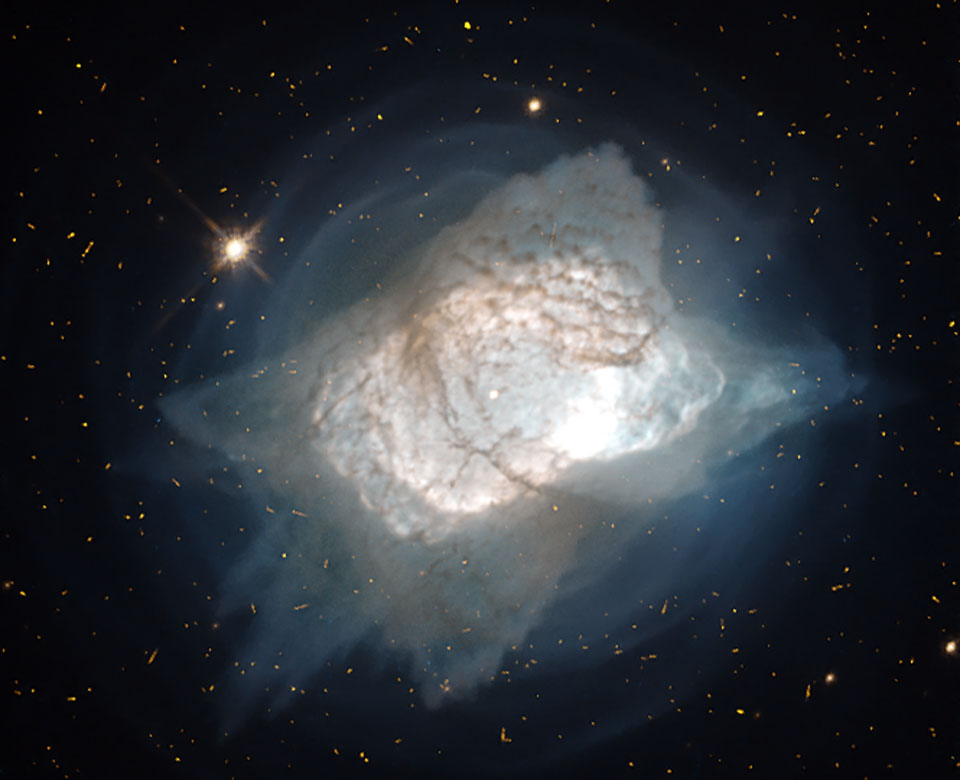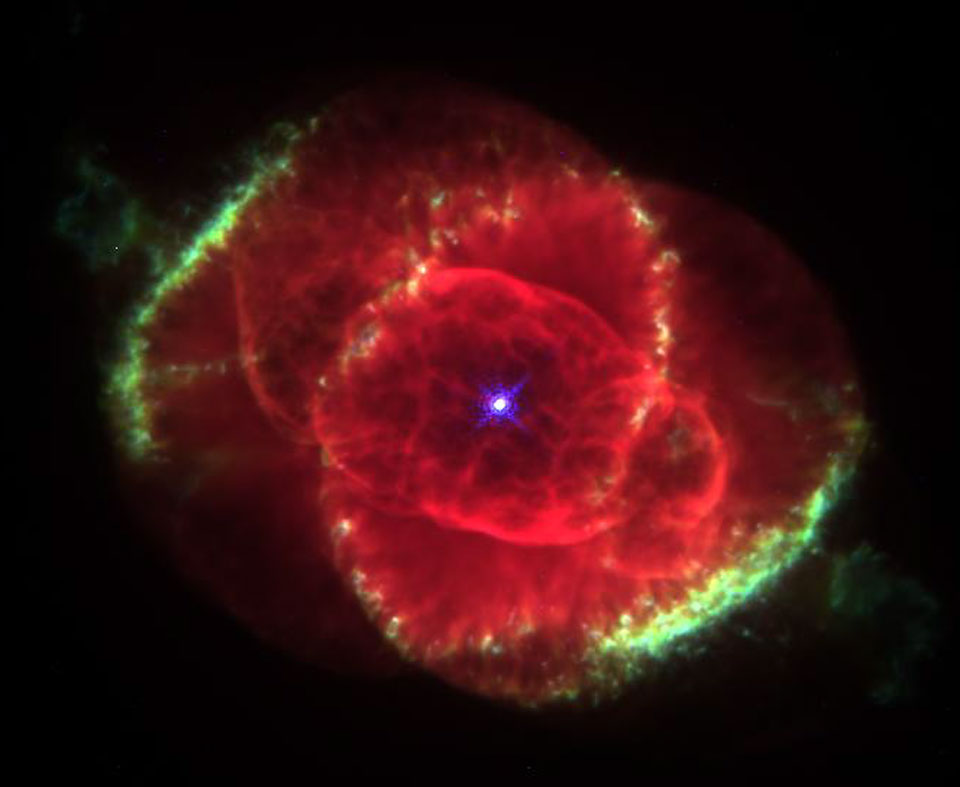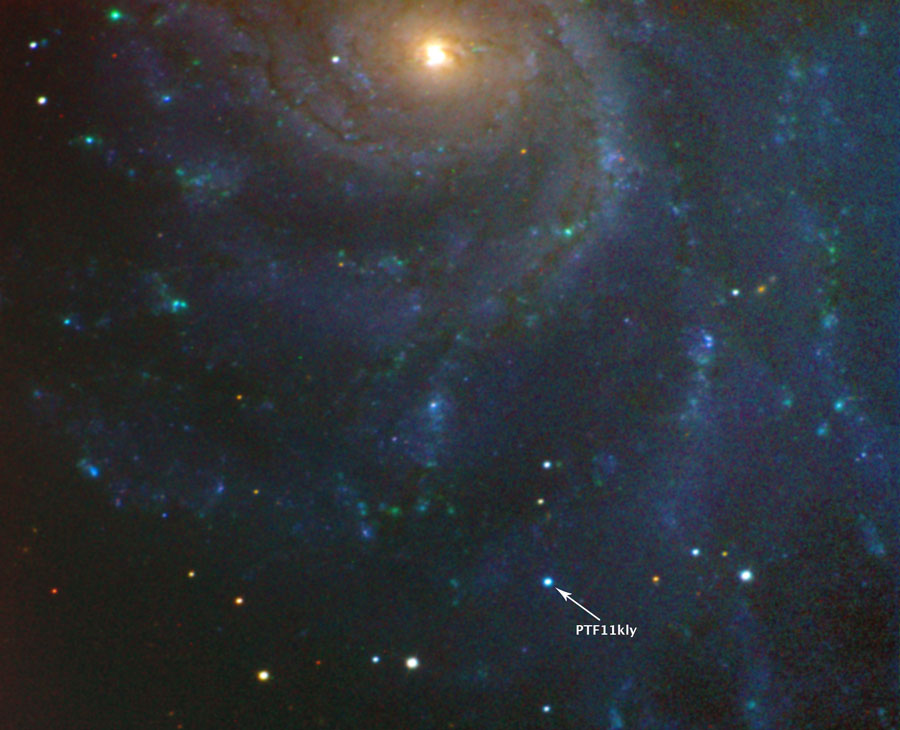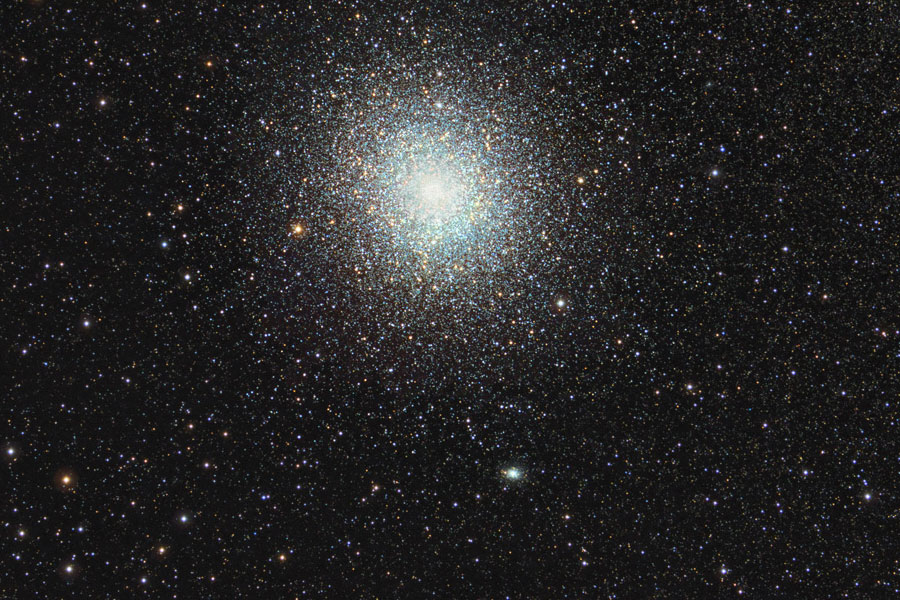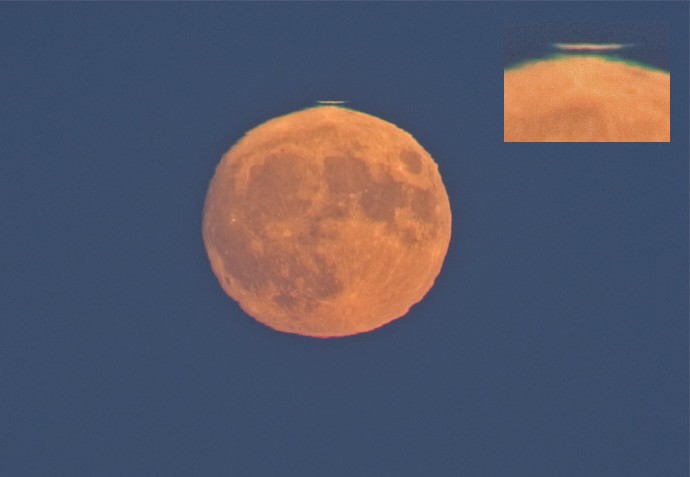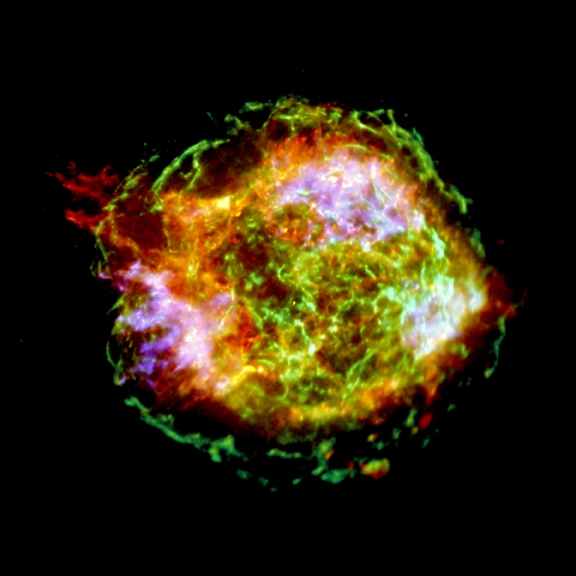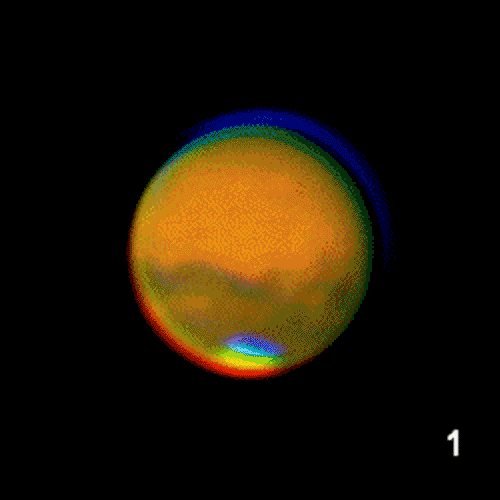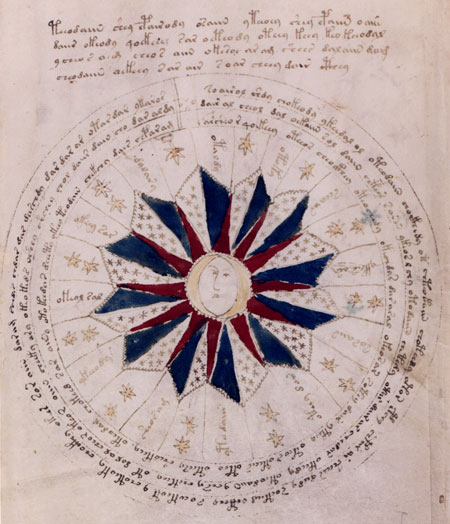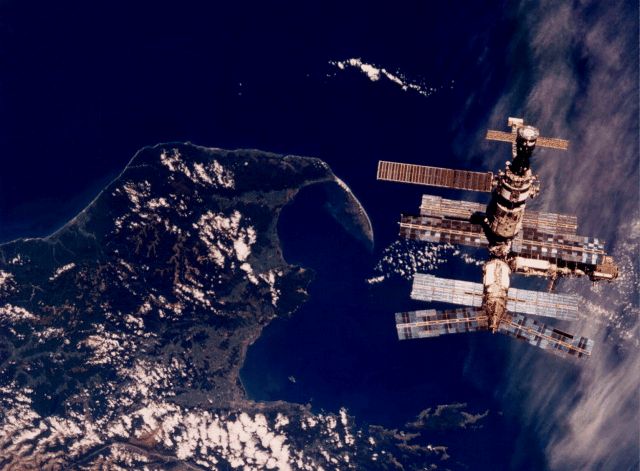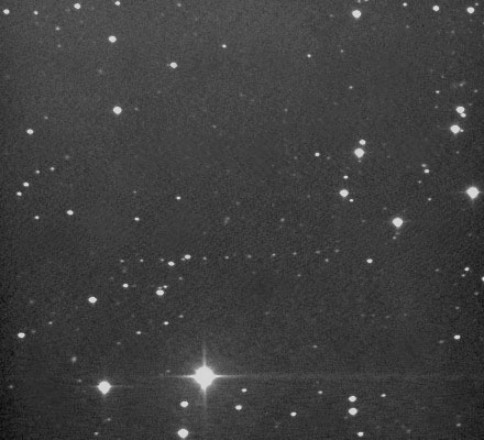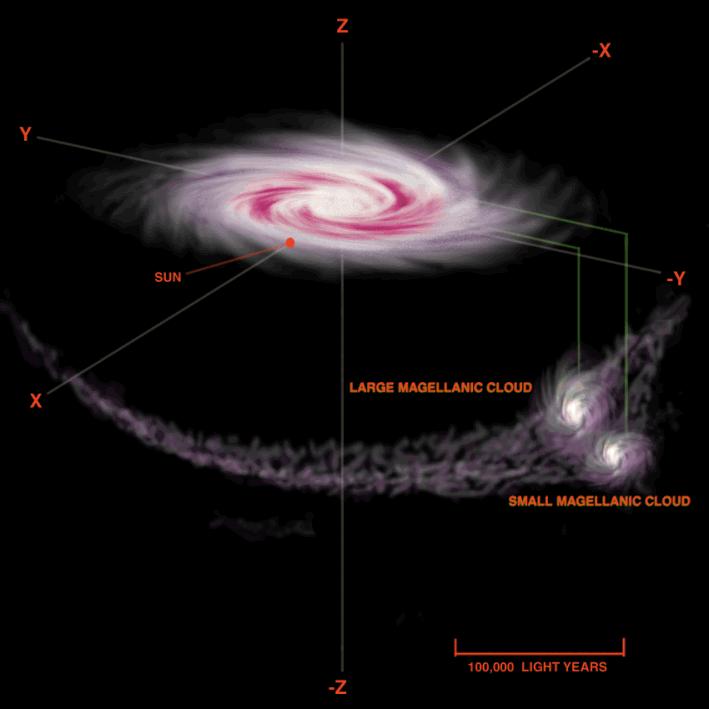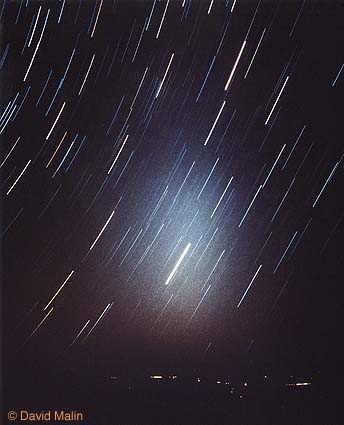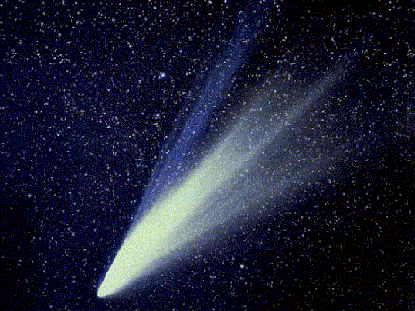| << Previous | Index | Next >> |
2015
[imghover6=http://apod.nasa.gov/apod/image/1508/Co ... ck_960.jpg]http://apod.nasa.gov/apod/image/1508/Co ... 0_wire.jpg[/imghover6]Image Credit & Copyright: John Chumack
2014
Click to play embedded YouTube video.
Image Credit: Voyager 2, JPL, NASA; Digital composition: Paul Schenk (LPI, USRA)
2013 It is one of the brightest planetary nebulae on the sky -- what should it be named? First discovered in 1878, nebula NGC 7027 can be seen toward the constellation of the Swan (Cygnus) with a standard backyard telescope. Partly because it appears there as only an indistinct spot, it is rarely referred to with a moniker. When imaged with the Earth-orbiting Hubble Space Telescope, however, great details are revealed. Studying Hubble images of NGC 7027 have led to the understanding that it is a planetary nebula that began expanding about 600 years ago, and that the cloud of gas and dust is unusually massive as it appears to contain about three times the mass of our Sun. Pictured above in assigned colors, the resolved, layered, and dust-laced features of NGC 7027 might remind sky enthusiasts of a familiar icon that could be the basis for an informal name. Please feel free to make suggestions -- some suggestions are being recorded, for example, in an online APOD discussion forum.
2012 Three thousand light-years away, a dying star throws off shells of glowing gas. This image from the Hubble Space Telescope reveals the Cat's Eye Nebula to be one of the most complex planetary nebulae known. In fact, the features seen in the Cat's Eye are so complex that astronomers suspect the bright central object may actually be a binary star system. The term planetary nebula, used to describe this general class of objects, is misleading. Although these objects may appear round and planet-like in small telescopes, high resolution images reveal them to be stars surrounded by cocoons of gas blown off in the late stages of stellar evolution.
2011 A nearby star has exploded and telescopes all over the world are turning to monitor it. The supernova, dubbed PTF 11kly, was discovered by computer only two days ago as part of the Palomar Transient Factory (PTF) sky survey utilizing the wide angle 1.2-meter Samuel Oschin Telescope in California. Its rapid recovery makes it one of the supernovas caught most soon after ignition. PTF 11kly occurred in the photogenic Pinwheel galaxy (M101), which, being only about 21 million light years away, makes it one of the closest supernovas seen in decades. Rapid follow up observations have already given a clear indication that PTF 11kly is a Type Ia supernova, a type of white dwarf detonation that usually progresses in such a standard manner than it has helped to calibrate the expansion history of the entire universe. Studying such a close and young Type Ia event, however, may yield new and unique clues. If early indications are correct, PTF 11kly should brighten to about visual magnitude 10 in the coming weeks, making it possible to monitor with even moderately sized telescopes.
2010 While hunting for comets in the skies above 18th century France, astronomer Charles Messier diligently kept a list of the things he encountered that were definitely not comets. This is number 27 on his now famous not-a-comet list. In fact, 21st century astronomers would identify it as a planetary nebula, but it's not a planet either, even though it may appear round and planet-like in a small telescope. Messier 27 (M27) is an excellent example of a gaseous emission nebula created as a sun-like star runs out of nuclear fuel in its core. The nebula forms as the star's outer layers are expelled into space, with a visible glow generated by atoms excited by the dying star's intense but invisible ultraviolet light. Known by the popular name of the Dumbbell Nebula, the beautifully symmetric interstellar gas cloud is over 2.5 light-years across and about 1,200 light-years away in the constellation Vulpecula. This impressive color composite highlights details within the well-studied central region and fainter, seldom imaged features in the nebula's outer halo. It includes narrowband images recorded using filters sensitive to emission from oxygen atoms, shown in blue-green hues, and hydrogen atoms in red.
2009 The Great Nebula in Orion, also known as M42, is one of the most famous nebulae in the sky. The star forming region's glowing gas clouds and hot young stars are near the center of this colorful deep sky image that includes the smaller nebula M43 and dusty, bluish reflection nebulae NGC 1977 and friends on the left. Located at the edge of an otherwise invisible giant molecular cloud complex, these eye-catching nebulae represent only a small fraction of this galactic neighborhood's wealth of interstellar material. Captured with very modest equipment, the gorgeous skyscape was awarded Best in Show at the 2009 Starfest International Salon of Astrophotography. Judges commented that the detail and shading were exquisite in this version of a classic astronomical image. The field spans nearly 3 degrees or about 75 light-years at the Orion Nebula's estimated distance of 1,500 light-years.
2008 Stars come in bunches. Of the over 200 globular star clusters that orbit the center of our Milky Way Galaxy, 47 Tucanae is the second brightest globular cluster (behind Omega Centauri). Light takes about 13,000 years to reach us from 47 Tuc which can be seen on the sky near the Small Magellanic Cloud in the southern constellation of Tucana. Also known as NGC 104, the dense cluster is made up of several million stars in a volume only about 120 light-years across. The cluster's red giant stars are particularly easy to see in this picture. The globular cluster is also home to exotic x-ray binary star systems.
2007 This coming Tuesday, our Moon will appear to disappear. A similar total lunar eclipse is seen above in a time lapse image captured in 2003 over North Carolina, USA. As the Earth moves between the Moon and the Sun, the Earth's shadow fell on the moon, making it quite dark. In the above picture the Earth's rotation, multiple exposures, and digital enhancements are used to create a time-lapse effect that dramatizes how the Moon looked as it faded out and re-appeared during the three hour lunar eclipse. As the Earth's shadow engulfed the Moon, the lunar images became less and less bright, practically disappearing during totality. At this time, the Moon, which normally shines by reflecting direct sunlight, shone only by sunlight refracted through the Earth's atmosphere. The next total lunar eclipse won't be visible from Earth until February 2008.
2006 Get out your red/blue glasses and check out this stereo scene from Taurus-Littrow valley on the Moon! The color anaglyph features a detailed 3D view of Apollo 17's Lunar Rover in the foreground -- behind it lies the Lunar Module and distant lunar hills. Because the world was going to be able to watch the Lunar Module's ascent stage liftoff via the rover's TV camera, this parking place was also known as the VIP Site. In December of 1972, Apollo 17 astronauts Eugene Cernan and Harrison Schmitt spent about 75 hours on the Moon, while colleague Ronald Evans orbited overhead. The crew returned with 110 kilograms of rock and soil samples, more than from any of the other lunar landing sites. Cernan and Schmitt are still the last to walk (or drive) on the Moon.
2005 July's Full Moon looks strangely darkened and distorted in this remarkable telescopic view. The image is one of a series recorded when the Moon was very near the horizon. The long sight-line through a turbulent atmosphere gives rise to the tantalizing optical effects, including the thin "mirage" shape that seems to float just above the Moon's upper edge. Also seen (more easily in the inset), along the Moon's upper edge is a noticeable green rim. Substantial atmospheric refraction produces this prism-like effect -- related to the more commonly witnessed green flash of the setting Sun. Careful inspection of the full image reveals a corresponding red rim along the lower edge, another intriguing signature of atmospheric refraction.
2004 One million seconds of x-ray image data were used to construct this view of supernova remnant Cassiopeia A, the expanding debris cloud from a stellar explosion. The stunningly detailed image from the Chandra Observatory will allow an unprecedented exploration of the catastrophic fate that awaits stars much more massive than the Sun. Seen in false-color, Cas A's outer green ring, 10 light-years or so in diameter, marks the location of the expanding shock from the original supernova explosion. At about 10 o'clock around the ring, a structure extends beyond it, evidence that the initial explosion may have also produced energetic jets. Still glowing in x-rays, the tiny point source near the center of Cas A is a neutron star, the collapsed remains of the stellar core. While Cas A is about 10,000 light-years away, light from the supernova explosion first reached Earth just over 300 years ago.
2003 Mars won't look this good. Tonight and over the next few days, when Mars is at its closest approach to Earth in nearly 60,000 years, you might get your best view ever of our planetary neighbor. Please, though, don't expect to see this much structure, or expect to see Mars rotate so much in so brief a period. The above 20-frame movie was created from 1000 frames of a backyard webcam that were meticulously aligned, added, and digitally sequenced. Pictured, Mars appears to rotate in a time-lapse sequence, with each frame separated by 30 minutes of real time. In reality, one full Martian rotation -- a Martian day -- is only about 40 minutes longer than an Earth day. For those with access to a small telescope, here is how mars will really look.
2002 The ancient text has no known title, no known author, and is written in no known language: what does it say and why does it have many astronomy illustrations? The mysterious book was once bought by an emperor, forgotten on a library shelf, sold for thousands of dollars, and later donated to Yale. Possibly written in the 15th century, the over 200-page volume is known most recently as the Voynich Manuscript, after its (re-)discoverer in 1912. Pictured above is an illustration from the book that appears to be somehow related to the Sun. The book labels some patches of the sky with unfamiliar constellations. The inability of modern historians of astronomy to understand the origins of these constellations is perhaps dwarfed by the inability of modern code-breakers to understand the book's text. The book remains in Yale's rare book collection under catalog number "MS 408."
2001 Uranus is the third largest planet in our Solar System after Jupiter and Saturn. Uranus is composed mostly of rock and ices, but with a thick hydrogen and helium atmosphere. The blue hue of Uranus' atmosphere arises from the small amount of methane which preferentially absorbs red light. This picture was snapped by the Voyager 2 spacecraft in 1986 - the only spacecraft ever to visit Uranus. Uranus has many moons and a ring system. Uranus, like Venus, has a rotation axis that is greatly tilted and sometimes points near the Sun. It remains an astronomical mystery why Uranus' axis is so tilted. Uranus and Neptune are quite similar: Uranus is slightly larger but less massive.
2000 This dream-like image of Mir was recorded by astronauts as the Space Shuttle Atlantis approached the Russian space station prior to docking during the STS-76 mission. Sporting spindly appendages and solar panels, Mir resembles a whimsical flying insect hovering about 350 kilometers above New Zealand's South Island and the city of Nelson, near Cook Strait. In late March 1996, Atlantis shuttled astronaut Shannon W. Lucid to Mir for a five month visit, increasing Mir's occupancy from 2 to 3. It returned to pick Lucid up and drop off astronaut John Blaha during the STS-79 mission in August of that year. Since becoming operational in 1986, Mir has been visited by over 100 spacefarers from the nations of planet Earth including, Russia, the United States, Great Britain, Germany, France, Japan, Austria, Kazakhstan and Slovakia. After joint Shuttle-Mir training missions in support of the International Space Station, continuous occupation of Mir ended in August 1999. Mir is still in orbit and its operation is now being pursued by commercial interests.
1999 Connect the dots and you'll trace the path of the Cassini spacecraft as it took a final turn by Earth on its way to the outer solar system. The dots (in a horizontal row just below center) are actually successive images of the spacecraft. The picture was produced by making exposures at 10 minute intervals as Cassini moved rapidly through Earth's night sky on August 18 - around the time of its closest approach. Cassini's ultimate destination is Saturn, but so far its voyage has consisted of a series of fuel saving "gravity assist" flybys of Venus and Earth, each designed to result in an increase in the spacecraft's speed. During this Earth flyby Cassini received about a 12,000 mile- per-hour (5.5 km/sec) boost. Cassini is now being maneuvered toward yet another slingshot encounter, this time a December 2000 flyby of of gas giant Jupiter, to received a final boost toward Saturn. The wayfaring spacecraft is slated to arrive at long last in the Saturnian system in 2004.
1998 Spanning the sky behind the majestic Clouds of Magellan is an unusual stream of gas: the Magellanic Stream. The origin of this gas might hold a clue to origin and fate of our Milky Way's most famous satellite galaxies: the LMC and the SMC. Two leading genesis hypotheses have surfaced: that the stream was created by gas stripped off these galaxies as they passed through the halo of our Milky Way, or that the stream was created by the differential gravitational tug of the Milky Way. Measurements of slight angular motions by the Hipparcos satellite have indicated that the Clouds are leading the Stream. Now, recent radio measurements have located fresh gas emerging from the Clouds, bolstering the later, tidal explanation. Most probably, in a few hundred million years, the Magellanic Clouds themselves will fall victim to this same tidal force.
1997 Sometimes the sky itself seems to glow. Usually, this means you are seeing a cloud reflecting sunlight or moonlight. If the glow appears as a faint band of light running across the whole sky, you are probably seeing the combined light from the billions of stars that compose our Milky Way Galaxy. But if the glow appears triangular and near the horizon, you might be seeing something called zodiacal light. Pictured above, zodiacal light is just sunlight reflected by tiny dust particles orbiting in our Solar System. Many of these particles were ejected by comets. Zodiacal light is easiest to see in September and October just before sunrise from a very dark location.
1996
1995 Here Comet West is seen showing two enormous tails that wrap around the sky. The ion tale of a comet usually appears more blue and always points away from the Sun. The dust tail trailing the comet's nucleus is the most prominent. Comet West was a visually spectacular comet, reaching its most picturesque in March of 1976. A comet this bright occurs only about once a decade. Comets are really just large dirty snowballs that shed material when they reach the inner solar-system. Many astronomers are hopeful that Comet Hale-Bopp will look as spectacular as this in the spring of 1997.
| << Previous | Index | Next >> |
